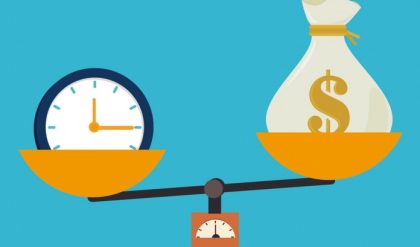What is ‘Fixed Income’
Fixed income is a type of investment in which real return rates or periodic income is received at regular intervals and at reasonably predictable levels. Fixed-income investments can be used to diversify one’s portfolio, as they pose less risk than equities and derivative investments. Retired individuals typically tend to invest heavily in fixed-income investments because of the reliable returns they offer.
BREAKING DOWN ‘Fixed Income’
There are two main types of investments in the capital markets: debt and equity. Equity, or company shares, is considered ownership in the company, and investors receive a return based on share price appreciation and/or dividends. As the name suggests, a fixed income is a pre-determined amount of income that is paid by an issuer and earned by an investor. Fixed-income investors do not have an ownership stake in the company but act as lenders of capital. In exchange for interest, fixed-income investors lend their money to firms. As a result, they are considered creditors and often have a higher claim than shareholders in case of bankruptcy or default, making the investment less risky than equity.
Fixed Income as a Product
The most common example of a security that yields a fixed income is a bond. Bonds are issued by federal governments, local municipalities and major corporations. US Treasuries pay a fixed income to investors, and include Treasury bonds (T-bonds), Treasury notes (T-notes), and Treasury bills (T-bills). Corporate bonds include investment-grade bonds and junk bonds. The former pays a lower fixed income than the latter because they have a higher credit rating due to their perceived stability. Junk bonds or high-yield bonds are attractive investments for investors looking for higher interest or income.
To understand why Treasuries and bonds are fixed income, consider a corporate bond with 5% annual interest due to mature in 5 years. The company issues this bond to raise funds for its capital projects. Investors lend money to the company by purchasing the bonds. In return for the funds lent to it, the firm compensates its bondholders by paying a fixed interest rate of 5% of the investment amount annually. The interest rate is also known as the coupon rate. A bondholder that purchased $10,000 worth of bonds will, thus, receive 5% x $10,000 = $500 every year. This amount is fixed and represents a steady income to the bondholder.
Interest Payments
The interest payment on fixed-income securities is considered regular income and is determined based on the creditworthiness of the borrower and current market rates. In general, bonds and fixed-income securities with longer-dated maturities pay a higher rate, because they are considered riskier. The longer the security is on the market, the more time it has to lose its value and/or default. At the end of the bond term, or at bond maturity, the borrower returns the amount borrowed, also referred to as the principal or par value.
The primary risk associated with fixed-income investments is the issuer or borrower defaulting on his payment. Other considerations include exchange rate risk for international bonds and interest rate risk for longer-dated securities.
Fixed Income as a Strategy
The term ‘fixed income’ in portfolio building generally refers to an investment style that generates stable and predictable returns. These returns are generated from low risk securities that pay dividends and interest. Building a fixed income portfolio may include investing in bonds as well as bond mutual funds, certificates of deposit (CD), and money market funds. These assets provide low but safe returns for investors.
In a rising interest rate economy, the investor could purchase individual bonds, invest in bond funds, or employ the laddering strategy. With the laddering strategy, a portfolio manager can reinvest the principal of matured bonds into bonds with higher rates. For example, a $60,000 investment could be divided into a one-year, two-year, and three-year bond. When the one-year bond matures a year from now, the principal will be rolled into a three-year bond. When the two-year bond matures, the principal will be rolled into a three-year bond, and so on. By so doing the investor is able to take advantage of the higher interest rates as the years go by.
Fixed-income investors who live on set amounts of periodically paid income face the risk of inflation eroding their spending power. To protect a portfolio from inflation, an investor can purchase Treasury Inflation-Protected Securities (TIPS).
Fixed-income securities are recommended for investors seeking a diverse portfolio; however, the percentage of the portfolio dedicated to fixed income depends on the investor’s personal investment style. There is also an opportunity to diversify the fixed-income component of a portfolio. For instance, you might have a portfolio with 50% in investment-grade bonds, 20% in Treasuries, 10% in international bonds, and the remaining 20% in high-yield bonds.





